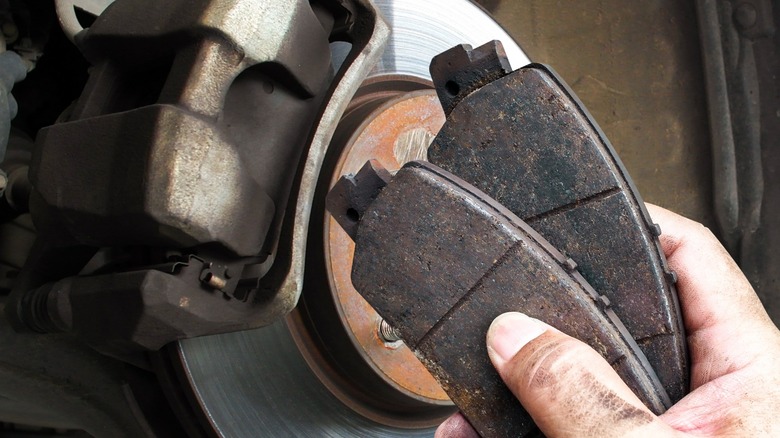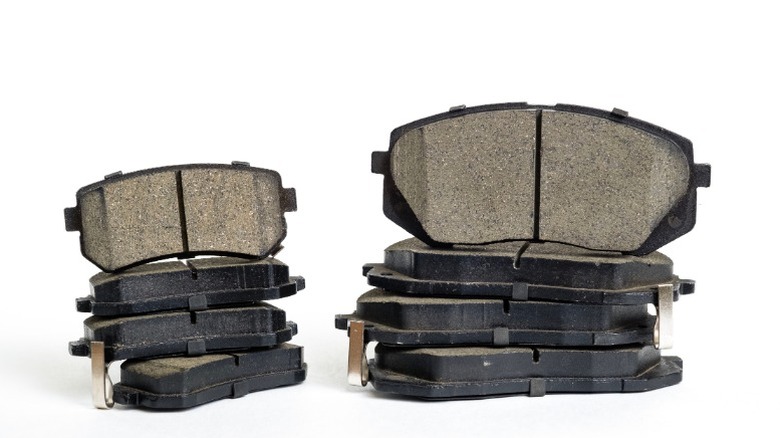Can You Use Front Brake Pads On The Back?
Most people understand the critical role that automotive brake systems play. Brake components are designed to help slow the vehicle's wheels down, allowing us to stop the car without waiting for the momentum to dissipate. For most modern vehicles, brake systems are composed of at least one set of disc brakes. In comparison to drum brakes, disc brake systems utilize metal rotors, brake pads, and calipers to create the friction necessary to stop our cars. And while some contemporary vehicles still use drum brakes on the rear axle, many modern cars now use disc brakes on the front and rear wheels.
If your vehicle has disc brakes on both axles, you may be wondering if the front and rear axles use the same pads. It's a reasonable question, and, in theory, it may make sense to assume that you can buy four brake pads of the same size for your DIY brake job. However, in reality, the vast majority of cars that use disc brakes on the front and rear axles use larger pads on the front axle. That means that, for most passenger vehicles, you cannot use front brake pads on the back.
If you're planning to perform a DIY brake replacement and worried about confusing the front and rear brake pads, don't stress yourself out too much. The front pads are typically substantially larger than the rear pads. That means that not only is there a clear, visible difference between the two sets, but it also means that you won't even be able to physically fit the front pads into the rear calipers. If you're interested in learning more about why front pads are larger than rear pads, stick around. As a former professional mechanic, I'll break it down for you.
Why aren't front and rear brake pads the same size?
As mentioned, most modern cars use larger brake pads on the front axle. That means that you shouldn't attempt to install front brake pads on the back, but it also means that you should have no trouble identifying the differences between front and rear pads. But why exactly are the front brake pads almost always larger than those on the rear axle?
The front brake pads (and rotors) tend to be significantly larger than those on the back because the front axle's brake components handle roughly 75% of the vehicle's braking needs. When you hit the brake pedal, your car's momentum causes its weight to shift forward onto the front axle. Keep in mind that the front axle houses your front wheels and tires, which you control via the steering wheel. The discrepancy between the braking force of the front and rear axles helps the driver maintain control of the vehicle as the force of its weight and momentum shift forward. It also accounts for the increased traction that the front wheels and tires get thanks to that weight shift and the heavier weight, in general, of a car's front end.
In comparison, the rear brakes tend to be smaller and use less hydraulic pressure than the front brakes. While the front brakes are designed to handle the bulk of the vehicle's braking needs, the rear brakes are engineered to stop the rear wheels without applying more pressure than the front brakes generate. They also typically house the parking/emergency brake for many vehicles, and it's essential that the rear brakes are in solid condition in case of a malfunction with the front brakes.

